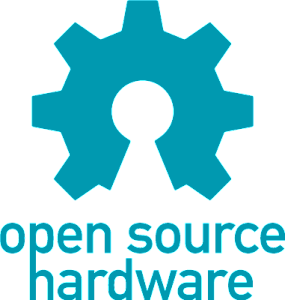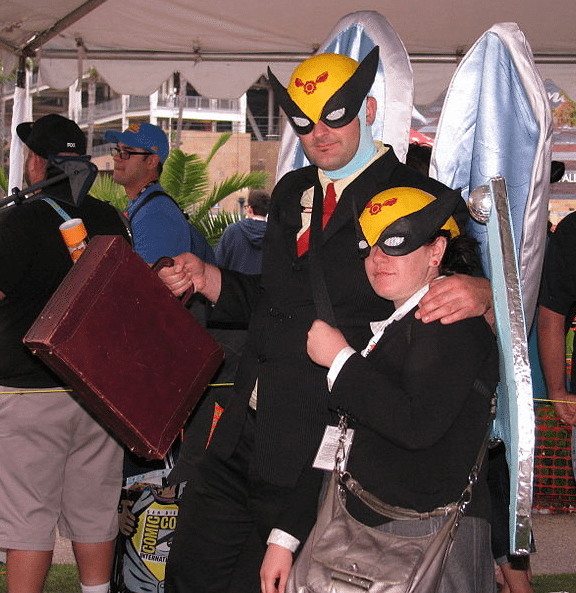I asked 3 lawyers involved with 3D printing about new legal developments likely to effect users, why intellectual property is important, and whether regulation prevents innovation.
Paris in the springtime, the phrase doesn’t immediately call to mind tear gas and improvised missiles. But it is against that background I find myself sat in the lobby of a conspicuously boutique Montmartre hotel sipping red wine with IP counselor John Hornick, while outside some of the estimated 100,000 demonstrators clash with police nearby. That morning Hornick delivered his provocatively titled presentation, “3D Printing will rock the world” at the Paris edition of the Inside 3D Printing conference and expo. As actual rocks shook the streets outside, Hornick provided additional insight into his earlier themes: “the world of 3D printing and its potential future impact on business, manufacturing, the law and crime, and, basically, life as we know it.”
Hornick takes an expansive view of the 3D printing landscape and muses on the implications for his profession. In a nutshell, what happens when tangible goods become free flowing digital files? 3D printing, Hornick says later, is part of the, “democratization of manufacturing.” This is an idea that has intrigued for centuries and may resonate with some of the demonstrators in Paris. Published in 1899, ‘Fields, Factories and Workshops Tomorrow’ is about techniques of production and distribution. The book’s author, scientist and anarchist philosopher, Kropotkin wrote, “Have the factory and the workshop at the gates of your fields and gardens, and work in them.” In such a decentralized system, where production runs might consist of a single unit, how can current methods of regulation and enforcement adapt? This is, “what I call 3D printing ‘away from control,’ which means the ability to make a part or product without anyone knowing about it or being able to control it,” says Hornick.

Instead, Weinberg believes, “A lot of industry rights holders have said that, well ok this is where our fans are, if we aren’t making a formal move in this space yet and its existence isn’t immediately causing concern for us’”. This hands off approach can benefit everyone involved. Economies of scale may leave the market for cosplay items underserved, but pursuit of individual fans for trademark infringement is unlikely at the moment. The new approach taken by companies means, “Thinking legally and from a business stand point in a creative way about what it means to let people who you don’t know, or have a formal arrangement with, engage with your intellectual property,” says Weinberg. He continues, “This seems to be a pretty successful model. But it’s a new model, and we haven’t quite figured it out.” When money enters into the equation things become more complex and the approach taken by some rights holders is much different.
What difference does it make?
A $2 entry fee possibly triggered the lawsuit delivered to a Pokémon fan and organizer of an unofficial themed party. Pokémon publisher Nintendo is known for a tough position on intellectual property. The company initially approached the phenomena of Let’s Play videos, where gamers upload video and commentary, by clamping down on recordings uploaded to YouTube of their games. Nintendo’s policy was to claim the material as copy-righted but allow it to remain online. This allowed them to benefit from the revenue generated by the ads YouTube insert into videos. However, the result was a decline in gamers uploading Nintendo content, which had essentially served as free marketing for the company. While not reversing their position entirely, the company softened its stance in 2014 under an agreement where the uploader receives 60% – 70% of ad revenue. But gamers who like to mod Mario, or generate new playing environments, can still expect an iron fist approach and to receive a take-down notice. Commentators have described this as “backward” and partly the reason why sales of rival consoles from Sony and Microsoft have leaped ahead. Given the success of a more recent Nintendo property, Pokémon Go, 3D printing aficionados may also drawn the attention of the Japanese giant.
While the music, movies or products enjoyed by the 80s consumer were mainly protected by copyright or patents, people, “weren’t transactionally engaged” with IP says Weinberg. “It wasn’t something that was in the air or in the water.” He explains how this came about, “people saw this new technology coming out and a lot of times the asterisk on [the technology] was some sort of intellectual property barrier.” He continues, “So people became conscientious of [intellectual property] almost as a thing that gets in the way of new cool stuff.”

I first spoke with Weinberg several years ago when he was working for Public Knowledge (PK) a, “public-interest advocacy organization working to defend your rights in the emerging digital culture” and based in Washington D.C. At the time there was a lot of interest around what Weinberg calls, “the gun stuff.” Sensationalist headlines tapped into wider concerns about security and a technophobic malaise threatened to spawn a range of protest bumper stickers proclaiming, ‘I’ll give you my RepRap when you pry it from my cold, dead hands.’ In the event cool heads prevailed. “Lawmakers were fairly receptive to conversations about been sensitive to 3D printing,” says Weinberg, “There is now the congressional Maker congress.”
This decade has seen, “an explosion of new content that is 3D printable,” says Weinberg, “and a lot of it is tied to open licenses or permissive licenses.” These licenses include those offered by Creative Commons, the global nonprofit organization who provide free tools to encourage sharing of knowledge and creative works. The 6 main creative commons licenses range those designed to encourage, “maximum dissemination and use of licensed materials” to more restrictive licenses that permit the unaltered sharing of a creators work for non-commercial purposes only. The use of Creative Commons licenses by sites such as Thingiverse and My Mini Factory, where a substantial amount of user generated 3D printable content is found, means that the, “core of publicly available 3D printable objects are licensed in a really permissive way,” says Weinberg. Unlike photography or music, wide spread use of 3D printing came about after Creative Commons licenses were reasonably established, meaning that a much greater proportion of 3D printing content is licensed in this manner. “For me that’s a note worthy thing that I don’t think anyone anticipated, but makes it a very interesting test bed for what happens with that kind of sharing community,” says Weinberg.
3D printers of the world unite
The 3D printing community is large and diverse and attempting to categorize members according to broad generalizations is a fruitless task. What is true is that historically, and presently, sections of the community have taken a much greater interest in intellectual property law than the average person. “We’re trying to communicate to our community all of the legal policy things that matter to them,” Weinberg says. He continues, “We also try to explain to people why we’re weighing in, why it matters and why it’s relevant. Some people may agree with our decision and our position on it, some people may not. But at a minimum what we hope is, they understand that there is a legal or a policy dispute that is going on that is relevant to them as people who are interested in 3D printing.”
One current issue has brought together several lawyers and companies from the 3D printing sector. One of the group is described by Weinberg as the coolest lawyer in 3D printing. When Paul Banwatt is not playing covers of David Bowie he is defending 3D printing from the “chilling effects” of over reaching laws. Hailing from terrestrial Canada and playing drums, rather than from Mars and playing guitar, Banwatt is Chief Operating Officer and General Counsel for Matter and Form, Inc. The company makes a high resolution 3D scanner and takes a keen interest in intellectual property matters. Matter and Form, together with Formlabs & Shapeways, recently filed an amicus brief, a document intended to help the court make a decision, that links 3D printing and cheerleading together in a way that has important ramifications.

The brief was filed in response to a dispute between rival cheerleader uniform manufacturers, Star Athletica and Varsity Brands. As a functional item, clothing is subject to patent law rather than copyright law. Copyright applies to creative works, but when an object contains elements of functionality and creativity a test must be performed. This test is called the doctrine of severability. I asked Banwatt why the case is important, “People involved in 3D printing and scanning should take an interest in clarifying this doctrine because it increases legal certainty for users of 3D technologies.” The numerous tests to determine severability create uncertainty and this is a problem. Weinberg explains, “Big companies have legal departments that can assess that uncertainty and make an informed decision. For many smaller users, uncertainty just means no.” A blog post by Weinberg explains the issues in greater detail.
Given the potential to become embroiled in lengthy and costly litigation over intellectual property it is possible to view the laws as a significant barrier to innovation. John Hornick says that although, “IP protects market positions. An argument can be made that it also incentivizes innovation, for example, by forcing innovators to design around existing IP.” He sees the other perspective and adds, “But an argument can also be made that it affects innovation in negative ways. But whether IP supports or hinders innovation, technology always moves forward.” Banwatt says, “There isn’t an inherent conflict,” between IP and innovation. “But there’s always a need for balance between effective incentives to create and public access,” he adds. “People are free to copy, reproduce, publish, distribute, etc. whatever they want unless there is a valid and applicable right preventing them from doing so. And none of copyrights, patents, trademarks or design rights are blanket prohibitions on copying. We have to be mindful of over claiming and encourage a healthy public domain, while allowing innovators and creators to appropriately benefit from their efforts.”
Encouraging this, “healthy public domain” is an ongoing task. The issues are frequently complex, and seemingly unrelated litigation can have unexpected consequences. Lawmakers must often contend with public opinion and may not always be best equipped to understand the technology and wider issues in play. While rights holders can understandably be wary of relaxing control over vital intangible assets. Weinberg’s perspective is, “That 3D printing fits into a larger social legal pattern of technology empowering people to make use of the world around them and there not being a way under traditional IP structures to really deal with that.”
This is why work by advocates such as Weinberg and Banwatt matters and engagement by those in the 3D printing community is important.
NB: Featured image is a badge with a character resembling Mickey Mouse in reference to the in popular culture rationale behind the Sonny Bono Copyright Term Extension Act of 1998, the badge was made by Nina Paley.



